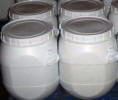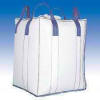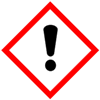| Anmol Chemicals is the pioneer manufacturers of Methyl Ethyl Ketone Peroxide, Pharmaceutical Excipients Fragrance & Flavor chemicals in India. We supply Halal and Kosher Methyl Ethyl Ketone Peroxide made in an ISO9001, ISO22000 (FSSC22000) and cGMP certified facility. Our group has several manufacturing facilities spread across the world, supported by toll manufacturers and representatives in UAE, Europe, Africa, USA, China and has several associated manufacturing facilities spread across India. All the Information on Physics, Chemistry, Applications, Uses and Technology on Manufacture of Methyl Ethyl Ketone Peroxide is in these pages. |
| The units have one or more of the certifications like FDA GMP, ISO 9001, ISO 22000, HACCP, REACH, Kosher & Halal |





Methyl Ethyl Ketone Peroxide SDS of Manufacturers
Methyl Ethyl Ketone Peroxide Properties and Specifications of Manufacturers
Methyl Ethyl Ketone Peroxide or MEKP or 2-Butanone Peroxide, SDS GHS, Safety Data Sheet
MSDS Sheet, Material Safety Data Sheet
1. Product Identification
Product Name/Synonyms: Methyl Ethyl Ketone Peroxide or MEKP or Ethyl methyl ketone peroxide or 2-Butanone Peroxide.
CAS No.: 1338-23-4
EINECS EC No.: 215-661-2
Molecular Formula: C8H18O6 or C2H5C(OOH)(CH3)OOC(OOH)(CH3)C2H5
Molecular Weight: 210.22
Relevant uses and uses advised against (if any): Industrial Manufacturing.
2. Hazards Identification
GHS, Globally Harmonized System Classification in accordance with 29 CFR 1910
Hazard Class and Category Code(s), Regulation (EC) No 1272/2008 (CLP):
Flammable liquids (Category 3) H226
Organic peroxides (Type F), H242
Acute toxicity, Oral (Category 4) H302
Acute toxicity, Inhalation (Category 4) H332
Skin corrosion (Category 1C), H314
Labeling according Regulation (EC) No 1272/2008
GHS Label Elements  Corrosive |
GHS Label Elements |
GHS Label Elements |
Signal Words: Danger
Hazard statements:
H226: Flammable liquid and vapor.
H242: Heating may cause a fire.
H302: Harmful if swallowed.
H332: Harmful if inhaled
H314: Causes severe skin burns and eye damage.
Precautionary statements:
P210: Keep away from heat/sparks/open flames/hot surfaces – No smoking.
P233: Keep container tightly closed.
P240: Ground/bond container and receiving equipment.
P241: Use explosion-proof electrical/ventilating/light/…/equipment.
P242: Use only non-sparking tools.
P243: Take precautionary measures against static discharge.
P261: Avoid breathing dust/fume/gas/mist/vapors/spray.
P264: Wash … thoroughly after handling.
P270: Do not eat, drink or smoke when using this product.
P271: Use only outdoors or in a well-ventilated area.
P280: Wear protective gloves/protective clothing/eye protection/face protection.
P330: Rinse mouth.
P362: Take off contaminated clothing and wash before reuse.
P301+310: IF SWALLOWED: Immediately call a POISON CENTER or doctor/physician.
P303+361+353: IF ON SKIN (or hair): Remove/Take off immediately all contaminated clothing. Rinse skin with water/shower.
P304+340: IF INHALED: Remove victim to fresh air and keep at rest in a position comfortable for breathing.
P305+351+338: IF IN EYES: Rinse cautiously with water for several minutes. Remove contact lenses if present and easy to do – continue rinsing.
P309 + P310 IF exposed or if you feel unwell: Immediately call a POISON CENTER or doctor/physician.
P370+378: In case of fire: Use Water spray, Carbon dioxide (CO2), Foam, Dry powder, and Sand for extinction.
P403+233+235: Store in a well-ventilated place. Keep container tightly closed. Keep cool.
P410: Protect from sunlight.
P501: Dispose of contents/container to authorized agents only.
Classification according to EU Directives 67/548/EEC or 1999/45/EC:
Hazard symbol(s):
O = Oxidizing R7
C = Corrosive R34
Xn = Harmful R20/21/22
Flammable: R10
R-phrase(s):
R7 May cause fire.
R 10 Flammable.
R20/21/22 Harmful by inhalation, in contact with skin and if swallowed.
R34 Causes burns.
R41 Risk of serious damage to eyes.
3. Composition/Information on Ingredients
Product Name/Synonyms: Methyl Ethyl Ketone Peroxide or MEKP or Ethyl methyl ketone peroxide or 2-Butanone Peroxide.
CAS No.: 1338-23-4
EINECS EC No.: 215-661-2
Percentage: 30 to 70% with non-hazardous diluents.
4. First Aid Measures
Always seek medical attention after first aid measures are provided.
Inhalation: Remove to fresh air. If not breathing, give artificial respiration. If breathing is difficult, give oxygen. Get medical attention.
Ingestion: Never give anything by mouth to an unconscious person. Get medical attention.
Skin Contact: Wipe off excess material from skin then immediately flush skin with plenty of water for at least 15 minutes. Remove contaminated clothing and shoes. Get medical attention. Wash clothing before reuse. Thoroughly clean shoes before reuse. Get medical attention.
Eye Contact: Immediately flush eyes with plenty of water for at least 15 minutes, lifting lower and upper eyelids occasionally. Get medical attention immediately.
Note to physicians: Product is a corrosive material. Use of gastric lavage or emesis is contra-indicated. Possible perforation of stomach or esophagus should be investigated. Do not give chemical antidotes. Asphyxia from glottal oedema may occur. Marked decrease in blood pressure may occur with frothy sputum, and high pulse pressure.
5. Fire Fighting Measures
Flammability of the Product: Flammable.
Auto-Ignition Temperature: SADT: 70C.
Flash Points: 82C
Products of Combustion: Carbon dioxide, Carbon monoxide, fumes.
Explosion: Explosive in presence of heat.
Fire Extinguishing Media: Use Water spray, Carbon dioxide (CO2), Foam, Dry powder and Sand for extinction. Use extinguishing measures that are appropriate to local circumstances and the surrounding environment. Water spray or fog is preferred; if water not available use dry chemical, CO2 or regular foam. Flammable liquid and vapor. Vapors are heavier than air and may travel to a source of ignition and flash back. Vapors can spread along the ground and collect in low or confined areas. Never direct a water jet in the container in order to prevent any splashing of the product which could cause spreading of the fire. Cool containing vessels with water jet in order to prevent pressure build-up, auto-ignition or explosion.
Special Information: In the event of a fire, wear full protective clothing and NIOSH-approved self-contained breathing apparatus with full face piece operated in the pressure demand or other positive pressure mode. At high temperatures it may produce toxic or irritating fumes. These substances will accelerate burning when involved in a fire. Some may burn rapidly with flare burning effect. Some may decompose explosively when heated or involved in a fire. May ignite combustibles (wood paper, oil, clothing, etc.). Thermal decomposition can lead to release of irritating and toxic gases and vapors.
6. Accidental Release Measures
Personal precautions, protective equipment and emergency procedures: Avoid breathing dust/fumes/gas/mist/vapors/spray. Use individual protective equipment (waterproof boots, suitable protective clothing, safety glasses, etc). Restrict unprotected personnel from the area. Prevent any contact with hot surfaces. Do not approach facing the wind. Do not touch the spilled material.
Environmental precautions: Do not let the product enter drains, soil or water sources.
Methods and materials used for containment Cleanup procedures and Storage:
Small Spill: Avoid mist formation. Avoid breathing mist. Ensure adequate ventilation. Use appropriate tools to put the spilled solid in a convenient waste disposal container. Finish cleaning by spreading water on the contaminated surface and dispose of according to local and regional authority requirements.
Large Spill: Prevent further leakage or spillage if safe to do so. Do not let product enter drains. Discharge into the environment must be avoided. Remove all sources of ignition. Provide proper ventilation. Absorb the material on a porous, inert material such as earth, sand or vermiculite. Carefully sweep solid/powder up the material without causing dust. Dispose of in accordance with local regulations. The spillage should be transferred to a suitable container and recovered or disposed of in accordance with local regulations. Because of the danger of spontaneous combustion, any combustible material, such as cloth, used for cleaning spillages, should be saturated with water and disposed of promptly, preferably by incineration.
7. Handling and Storage
Precautions for safe handling: Apply according to good manufacturing and industrial hygiene practices. Ensure proper ventilation. Provide appropriate exhaust ventilation at places where dust/mist/vapor is formed. Wash thoroughly after handling. Do not drink, eat or smoke while handling. Do not ingest. Avoid contact with skin, eyes and clothing. Minimize dust generation. Avoid breathing dust/fumes/gas/mist/vapors/spray. Avoid contact with eyes, skin, and clothing. Keep container tightly closed. Avoid ingestion and inhalation. Use individual protective equipment (waterproof boots, suitable protective clothing, safety glasses, etc). Prevent any contact with hot surfaces. If you feel unwell, seek medical attention.
Conditions for safe storage, including any incompatibilities: Store in cool, dry and ventilated area away from heat sources and protected from sunlight in tightly closed original container. Keep air contact to a minimum. Do not leave the material container open. Store protected from heat, sparks and ignition sources and incompatible materials. Avoid contact with skin and eyes. Avoid inhalation of dust/mist/vapor. Do not store with incompatible materials like strong oxidizing agents, strong reducing agents, strong acids, strong bases, powdered metals and organic materials.
Keep the product in its original container well sealed, in a dry and ventilated area, away from potential sources of ignition and protected from light. Protect against physical damage. Recommended storage temperature 2C - 8C. Avoid heating above: 30C.
8. Exposure Controls/Personal Protection
Airborne Exposure Limits: Not Established. Keep it below 0.2 ppm. Provide adequate ventilation.
Ventilation System: A system of local and/or general exhaust is recommended to keep employee exposures as low as possible. Local exhaust ventilation is generally preferred because it can control the emissions of the contaminant at its source, preventing dispersion of it into the general work area.
Personal Respirators (NIOSH Approved): For conditions of use where exposure to dust or mist is apparent and engineering controls are not feasible, a particulate respirator may be worn. For emergencies or instances where the exposure levels are not known, use a full-face positive-pressure, air-supplied respirator.
Skin Protection: Wear protective gloves and clean body-covering clothing.
Eye Protection: Use chemical safety goggles and/or full face shield where dusting or splashing of solutions is possible. Maintain eye wash fountain and quick-drench facilities in work area.
Other Control Measures: Maintain good housekeeping in work area. Handle in accordance with good industrial hygiene and safety practice. Wash hands after handling.
9. Physical and Chemical Properties
Appearance: Clear colorless oliy liquid.
Odor: Mint like odor.
Odor threshold: Not available.
pH: Not available.
Relative density: 1.17
Melting point/freezing point: Not available.
Initial boiling point and boiling range: Not available.
Flash point: 82C.
Auto-ignition temperature: SADT: 70C.
Decomposition temperature: Not available.
Upper/lower flammability or explosive limits: Not available.
Vapor pressure: Not available.
Vapor density: Not available.
Evaporation rate: Not available.
Flammability (solid, gas): Not available.
Partition coefficient: n-octanol/water: Not available.
Solubility(ies): Soluble in water.
Viscosity: Not available.
10. Stability and Reactivity
Stability: Stable under ordinary conditions of use and storage. Vapour/air-mixtures are explosive at intense warming. Violent reactions possible with: Strong acids, alkalies, Reducing agents, metallic salts.
Hazardous Decomposition Products: It emits Carbon dioxide, Carbon monoxide & Toxic Fumes.
Hazardous Polymerization: Will not occur.
Incompatibilities: Heat, strong oxidizing agents, strong reducing agents, strong acids, strong bases. Powdered metals, Organic materials.
Conditions to Avoid: Incompatibles, heat, flame, sparks & light.
11. Toxicological Information
Toxicity data
Oral LD50 = 470 mg/kg ( Rat ) for Methyl Ethyl Ketone Peroxide.
Carcinogenicity: Not listed by ACGIH, IARC, NTP, or CA Prop 65.
Teratogenicity: No information found
Reproductive Effects: No information found
Mutagenicity: No information found.
12. Ecological Information
Toxicity to fish: No information available.
Persistence and Degradability: Soluble in water Persistence is unlikely.
Bioaccumulation/ Accumulation: No information available.
Mobility: Will likely be mobile in the environment due to its water solubility.
Results of PBT and vPvB assessment: No data available for assessment.
13. Disposal Considerations
Whatever cannot be saved for recovery or recycling should be managed in an appropriate and approved waste disposal facility. Processing use or contamination of this product may change the waste management options. State and local disposal regulations may differ from federal disposal regulations. Dispose of container and unused contents in accordance with federal, state and local requirements.
14. Transport Information
DOT USA, TDG Canada & ADR/RID Europe:
UN Number: UN3105
Shipping Name: ORGANIC PEROXIDE TYPE D, LIQUID ((Methyl ethyl ketone peroxide))
Hazard Class: 5.2; Packing Group: NA.
IMDG/IMO & IATA:
UN Number: UN3105
Shipping Name: ORGANIC PEROXIDE TYPE D, LIQUID ((Methyl ethyl ketone peroxide))
Hazard Class: 5.2; Packing Group: NA.
15. Regulatory Information
USA:
SARA 311/312 Hazards: Fire Hazard: Yes, Immediate Health Hazard: Acute Yes.
16. Other Information
European Labeling in Accordance with EC Directives:
H226: Flammable liquid and vapor.
H242: Heating may cause a fire.
H302: Harmful if swallowed.
H332: Harmful if inhaled
H314: Causes severe skin burns and eye damage.
Disclaimer:
**************************
Our company provides this MSDS sheet in good faith but makes no representation as to its comprehensiveness or accuracy. This Methyl Ethyl Ketone Peroxide SDS sheet is intended only as a guide to the appropriate precautionary handling of the material by a properly trained person using this product. The above information has been compiled from various sources and has the possibility of discrepancy and being out-dated information. Individuals receiving the information must exercise their independent judgment and do further search in determining its appropriateness for a particular purpose. In no case shall our company be liable to loss or damages by the product user.
**************************
Methyl Ethyl Ketone Peroxide Manufacturers
Anmol Chemicals
S-8, SARIFA MANSION, 2ND FLANK ROAD, CHINCHBUNDER, MUMBAI 400009, INDIA
TEL: (OFFICE) 91-22-23770100, 23726950, 23774610, 23723564. FAX: 91-22-23728264
e-mail: anmolc@mtnl.net.in

Exports to USA, Canada, UAE, Dubai, South Africa, Tanzania, Kenya, Nigeria, Egypt, Uganda, Turkey, Mexico, Brazil, Chile, Argentina, Europe Netherlands, Italy, Spain, Germany, Portugal, France, Malaysia, Indonesia, Thailand, Korea, Vietnam, Japan, etc.
Copyright and Usual Disclaimer is Applicable. 26 December, 2021
Barter
They who love thee on this earth, keep calling on thee and chanting thy beads
Lest thou forgetest.
They assign the credit of their hard work to your blessings
They keep you amused.
They come to thy temple with baskets of fruits, as if you were a glutton
They deny the same to their children.
They offer you milk for a bath and burn the ghee
They hardly understand the meaning of it.
They bring gold and diamonds. They come with beating of drums
They love to advertise their offerings.
They offer you a small bribe as advance for booty, called lottery
They love to dream.
I do not bow down at your door
I do not bargain for booty
Your promise of the heaven does not lure me
Your hell-fire does not scare me
I do not even know the proper method of prayer
I do not offer any thing to you
Ages have gone by and I have not seen you my lord
Yet my love for you keeps waiting for you

